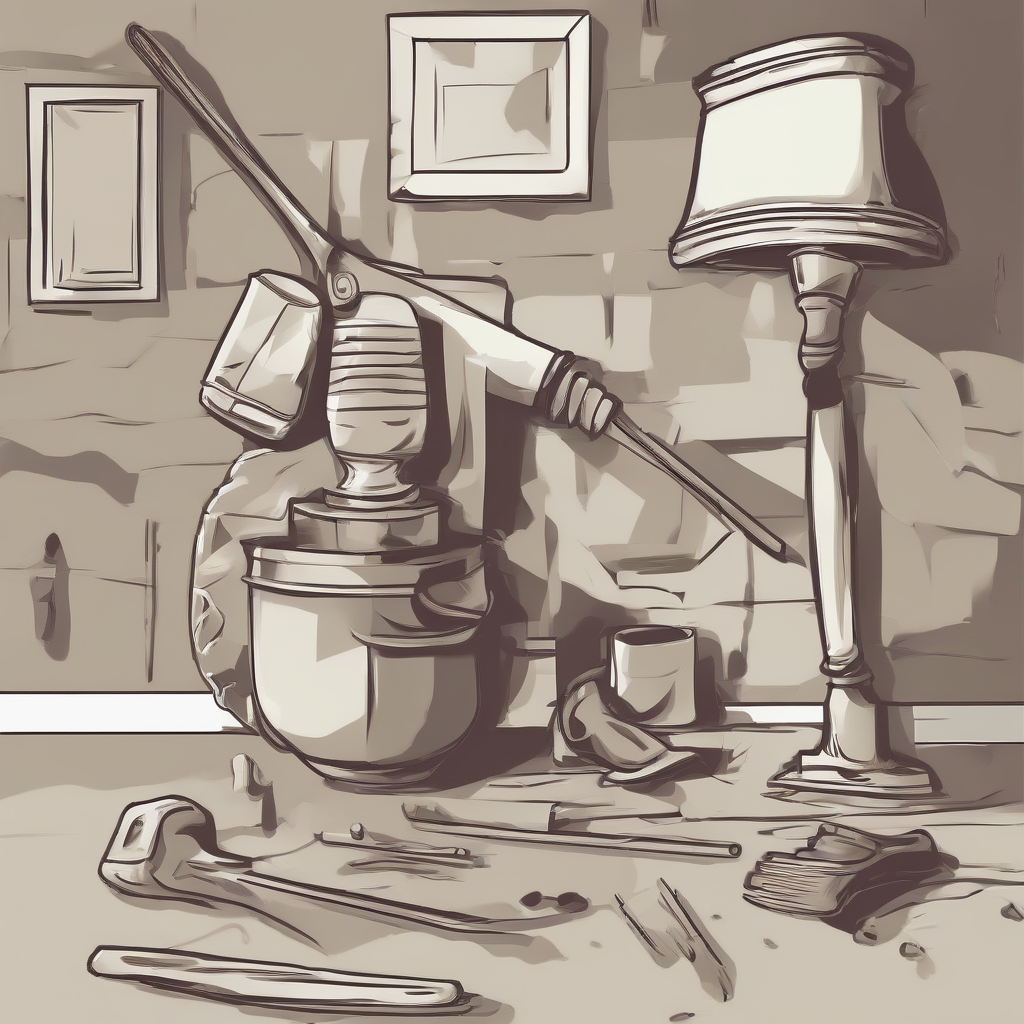Hammer Time: Your Guide to Home Improvement Success

Hammer Time: Your Guide to Home Improvement Success
Introduction
Welcome to Hammer Time, your comprehensive guide to conquering home improvement projects! Whether you're a seasoned DIY enthusiast or a novice just starting out, this resource is designed to empower you with the knowledge, tools, and confidence to transform your home into the sanctuary of your dreams.
Planning Your Project
- Define Your Vision: Before you pick up a hammer, take the time to visualize your desired outcome. Create a mood board, sketch out ideas, and gather inspiration from magazines, websites, and even other homes you admire.
- Set Realistic Goals: Home improvement projects can be ambitious. Divide your project into manageable phases to avoid feeling overwhelmed. Prioritize tasks and set realistic deadlines.
- Budgeting and Cost Estimation: Thorough budgeting is crucial to avoid financial surprises. Research material costs, labor estimates (if hiring contractors), and any potential unexpected expenses.
- Research and Gather Information: The internet, books, and home improvement stores are valuable resources for learning about specific techniques, materials, and tools.
- Obtain Permits and Approvals: Certain home improvement projects may require permits from your local municipality. Research local regulations and obtain any necessary approvals before starting work.
Essential Tools and Materials
- Power Tools: A drill, saw, sander, and perhaps a nail gun will be essential for most projects. Consider purchasing or renting tools based on your project needs and budget.
- Hand Tools: A good set of hammers, screwdrivers, wrenches, pliers, and measuring tools will be invaluable for both small and large projects.
- Safety Gear: Safety is paramount. Always wear safety glasses, gloves, and a dust mask when working. A hearing protector is also essential for noisy tasks.
- Materials: From lumber and paint to insulation and plumbing supplies, carefully select materials that meet your project requirements and budget.
Basic Home Improvement Techniques
Painting
- Surface Preparation: Proper surface preparation is essential for a smooth and durable paint finish. Clean, sand, and prime surfaces before applying paint.
- Choosing the Right Paint: Consider factors like paint type, sheen, and color. Consult with a paint professional for recommendations.
- Application Techniques: Learn the proper methods for applying paint using brushes, rollers, or sprayers. Use even strokes and thin coats for optimal results.
Flooring
- Types of Flooring: Explore various flooring options like hardwood, laminate, tile, and carpet, considering factors like durability, aesthetics, and cost.
- Installation Methods: Each flooring type has specific installation techniques. Research and understand the process before starting. You may need specialized tools or equipment.
- Floor Preparation: Ensure the subfloor is level and free of imperfections before installing flooring. This will contribute to a seamless and long-lasting finish.
Kitchen and Bathroom Remodeling
- Planning and Design: Consider your lifestyle and needs when designing your kitchen and bathroom. Opt for functional layouts and durable materials.
- Cabinetry and Countertops: Choose cabinetry styles and countertop materials that complement your overall aesthetic. Consider functionality and maintenance requirements.
- Plumbing and Electrical Work: These are crucial aspects of kitchen and bathroom remodeling. Hire a qualified plumber and electrician to ensure safety and compliance with building codes.
- Tile Installation: Tiles are often used in kitchens and bathrooms. Learn proper tile installation techniques or hire a skilled tile installer.
Hiring Professionals
- Research and Referrals: Get recommendations from friends, family, or online platforms. Check online reviews and credentials.
- Request Multiple Quotes: Obtain quotes from different contractors to compare prices, services, and experience.
- Thorough Contract Review: Carefully review the contract before signing. Ensure clear payment terms, timelines, and scope of work.
- Communication and Collaboration: Maintain open communication with contractors throughout the project. Address any concerns or questions promptly.
Safety First
- Read and Understand Instructions: Always refer to manufacturer instructions for tools and materials. Follow safety guidelines carefully.
- Use Proper Safety Gear: Wear protective gear like safety glasses, gloves, and a dust mask to minimize risks.
- Never Work Alone: Have someone nearby who can assist in case of emergencies.
- Be Aware of Electrical Hazards: Exercise caution when working with electricity. Turn off power at the source before working on electrical components.
Conclusion
Hammer Time aims to equip you with the knowledge and confidence to tackle your home improvement projects successfully. By planning, researching, and following safety guidelines, you can transform your home into a space that reflects your style and meets your needs.
What's Your Reaction?

















